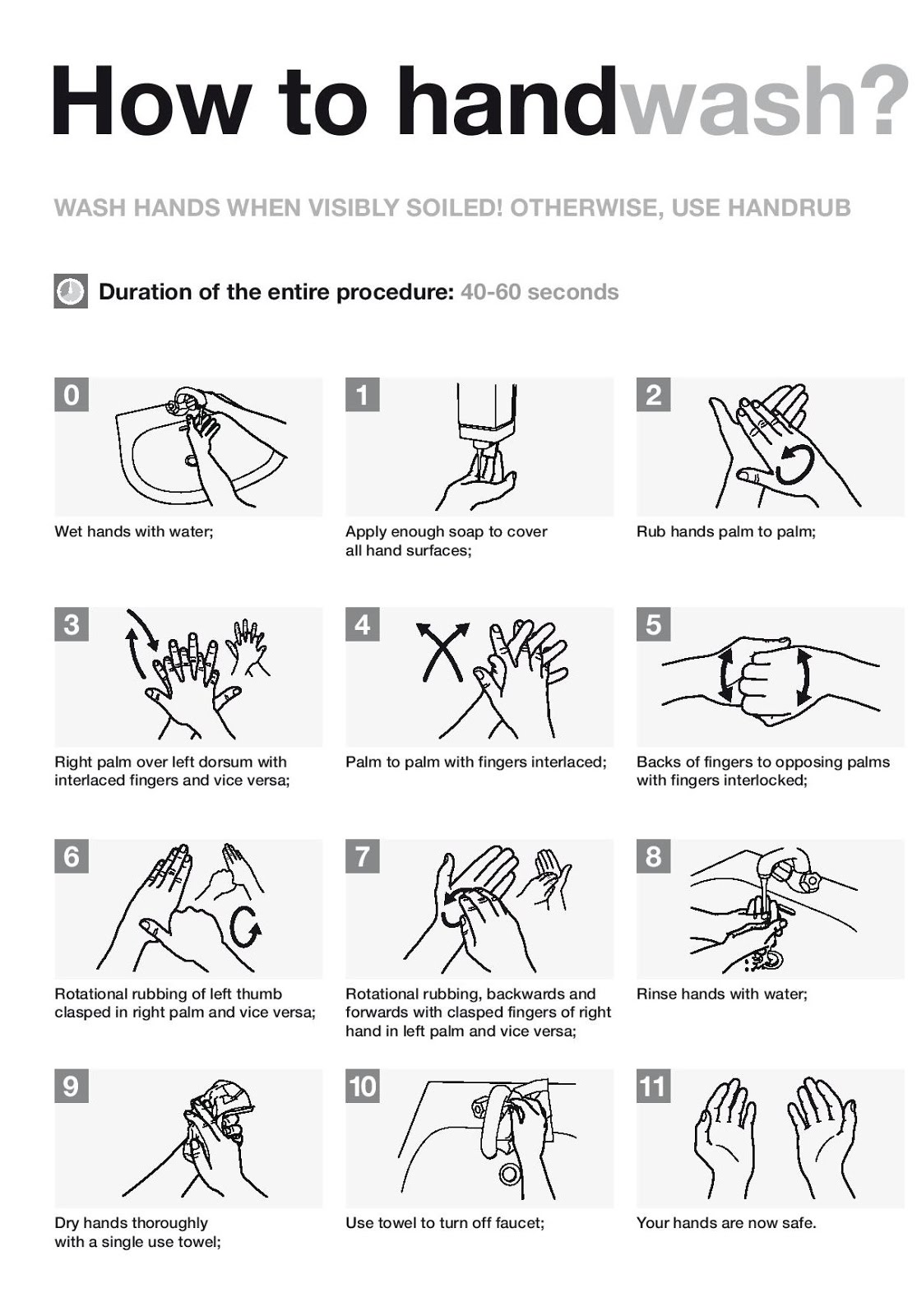

Washing hands with soap and water is the best way to reduce the number of microorganisms (germs) on hands and should always be encouraged over the use of alcohol based hand sanitisers in a non-healthcare setting. If cloth towels are used, select a fresh towel each time. To minimise chapping (reddening, roughening or cracking of skin) of hands, pat dry rather than rub them. dry hands with a single use disposable paper towel or a clean towel.pay attention to the backs of hands, wrists, between fingers and under fingernails.rub hands together for 15 to 20 seconds as you wash them.wet hands thoroughly and lather with soap.antibacterial hand washes are not necessary in most cases, and may encourage the development of resistant bacteria.the type of soap does not matter provided it is well tolerated by the user.if reusable containers are used for liquid soap, they should be cleaned and dried before refilling with fresh liquid soap.if bar soap is used, ensure it is kept in a container that allows drainage.Soap (preferably liquid) should be used to wash hands.In addition any cuts and abrasions on the hands or fingers should be covered with a water resistant dressing which should be changed as necessary or when the dressing becomes soiled. after going to the toilet or changing a nappy.For non-healthcare settings or soiled hands, the most effective way to remove microorganisms is to wash hands using soap and running water. These include washing with soap and water or using an alcohol based hand sanitiser. Hand hygiene refers to any method which effectively removes harmful microorganisms (germs). A suite of hand hygiene improvement tools and materials have been created fromĪ base of existing research and evidence and from rigorous testing, as well as working closely with a range of experts in the field.Hand hygiene is one of the most effective ways of stopping the spread of infection. SAVE LIVES: Clean Your Hands incorporates a global annual day to focus on the importance of improving hand hygiene in health care with WHO providing support for these efforts. WHO SAVE LIVES: Clean Your Hands annual initiative is part of a major global effort led by the World Health Organization (WHO) to support health-care workers to improve hand hygiene in health care and thus support the prevention of often life threatening The central core of SAVE LIVES: Clean Your Hands is that all health-care workers should clean their hands at the right time and in the right way. Safety Challenge: Clean Care is Safer Care work which is now WHO IPC global unit. BackgroundĪs part of a major global effort to improve hand hygiene in health care, led by WHO to support health-care workers, the SAVE LIVES: Clean Your Hands annual global campaign was launched in 2009 and was a natural extension of the WHO First Global Patient WHO have appreciated receiving communications about country and health-care facility activities.Īction must continue use the WHO tools to support your actions. Sustaining the efforts to improve patient safety requires dedicated action and innovation both of which are now more crucial than ever. Numbers are a great awareness-raising mechanism, as demonstrated by the growing number of health-care facilities registered for SAVE LIVES: Clean Your Hands but theyĪre not the end point. WHO's role includes encouraging engagement and action to maintain this global movement. It also aims to demonstrate the world's commitment to this priority area The campaign aims to galvanise action at the point of care to demonstrate that hand hygiene is the entrance door for reducing health care-associated infection and patient safety. SAVE LIVES: Clean Your Hands brings people together in support of hand hygiene improvement globally and to progress the goal of maintaining a global profile on hand hygiene in health care. Impact on quality of care and patient safety across all levels of the health system. Infection Prevention and Control, including hand hygiene, is critical to achieve UHC as it is a practical and evidence-based approach with demonstrated Services and access to safe, effective, quality and affordable essential medicines and vaccines for all. achieving better health and well-being for all people at all ages, including financial risk protection, access to quality essential health care WHO calls on everyone to be inspired by the global movement to achieve universal health coverage (UHC), i.e. Each year the SAVE LIVES: Clean Your Hands campaign aims to progress the goal of maintaining a global profile on the importance of hand hygiene in health care and to ‘bring people together’ in support of


 0 kommentar(er)
0 kommentar(er)
